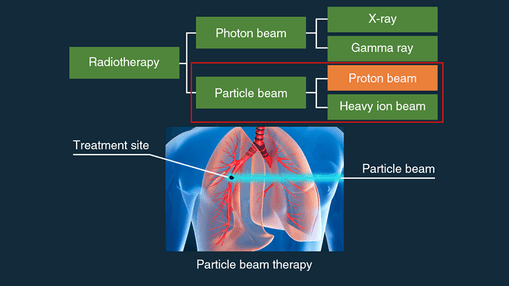Preserving quality of life with less-invasive particle beam cancer therapy

Categories: Chemical and healthcare
As we discussed earlier this month in our ‘State of Engineering’ highlight, healthcare engineering is fast becoming a multifaceted, multidisciplinary hub of innovation that encompasses wearable technology and smart equipment through to digital medicines and biopharmaceuticals.
Throughout the month we’ve featured innovations such as smart wardrobes and bespoke rehabilitation systems, explored future trends in biomedical engineering, and discussed the interplay between healthcare and cybersecurity.
However, additional to the day-to-day improvements to patient Quality of Life (QoL) afforded by these new technologies, another key focus of contemporary medical research lies in investigating new, more effective ways to combat diseases and health conditions, such as cancer. As such, we are turning to look at recent innovations in cancer therapy, examining a development by QEPrize donor company Hitachi that produces excellent results while limiting patient discomfort.
For context, it is estimated that, in the US alone, there will be over 1.5 million new cancer diagnoses in 2018. With at least 4,700 new diagnoses every single day; new ways to detect, isolate, and treat cancer are of paramount importance, and establishing treatments that operate without causing harm or discomfort to the patient is even more critical.
We can broadly divide these cancer treatments into three main categories: surgery, chemotherapy, and radiotherapy, each with characteristics and effects that determine when they are most practical and effective to use. Of the three categories, radiotherapy – which can be subdivided into externally and internally focused radiotherapy – receives significant interest for its use as a less-invasive means of treatment, as we will explore below.
Particle beam therapy
Particle beam therapy is a type of external radiotherapy, where a targeted beam of either protons – or carbon ions – is directed straight onto the treatment site to destroy cancerous cells. The speed at which the particles are fired can be adjusted, which allows clinicians to alter the depth of the radiation to match the treatment site –precisely delivering a concentrated dose of radiation to the cancer site.
The benefit of particle beam therapy is that it combines specificity with a comparatively less stressful effect on a patient's body. There is currently no definitive cure for cancer, but we live in a time where the treatments created on the road towards that cure can significantly improve the patients’ quality of life while undergoing therapy. Particle beam therapy is one such treatment.

Ensuring QoL for patients
The proton-based particle beam therapy system, co-developed by Hitachi and Hokkaido University Hospital, improves on ‘standard’ particle beam therapy by amalgamating tumour-tracking and spot-scanning radiotherapy technologies. This combination allows clinicians to use a concentrated beam that continually fluctuates to match the shape of the treatment site – even as the site itself moves during treatment due to breathing or other bodily functions.
Previous attempts to encompass the entire site involved widening the area of effect. The downside to this was that the radiation used in the therapy then encountered some of the surrounding tissue and organs, which caused more stress on the body.
The therapy tightly concentrates a beam onto the treatment site, treatment-induced stress to the surrounding area, and to the body as a whole, is significantly reduced. Both physically and mentally, patient stress is reduced to the extent that they can to undergo treatment on an outpatient basis while continuing to work and carry out day-to-day activities.




